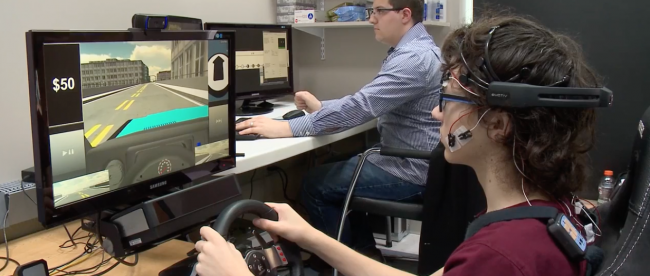Virtual Reality Could Teach Teenagers With Autism Spectrum Disorder How To Drive
It is estimated that 30% of adolescents with autism spectrum disorder either drive or want to drive. To help those adolescents get more confident, and understand the nuances of driving, an assistant professor at Vanderbilt University Medical Center has collaborated with a team of engineers in developing a virtual reality based driving environments that teaches several driving lessons to adolescents on the spectrum.
The driving environment consists of many driving scenes and weathers, and provides various driving conditions to the driver. It also includes pedestrians in the environment that the driver needs to pay attention to.
The driver is attached to several sensors that check their heart rate, breathing, brain waves as well as their emotional state. Are they enjoying the driving or feeling frustrated? All of that is monitored.
There is an eye tracker that monitors the driver’s eyes – how often to they take their eyes off the road? Are they watching the pedestrians? Based on the information captured, the simulator adapts to the driver, reinforcing proper driving rules.
Brandon, who has high functioning Asperger’s and ADHD (which means sometimes he can’t focus on anything) has been a suject of this study. Brandon mentions that these “interventions” are helping him. The eye tracker in the simulator picks up things that he doesn’t realize he needs to pay attention to, and later notifies him about them. In the future, when Brandon’s driving, he remembers to keep those things in mind.
Preliminary studies show that these types of intervention systems are helping teens with their driving skills. The next step is to see how well these skills translate to the real world.
Source: Science 360


Leave a comment